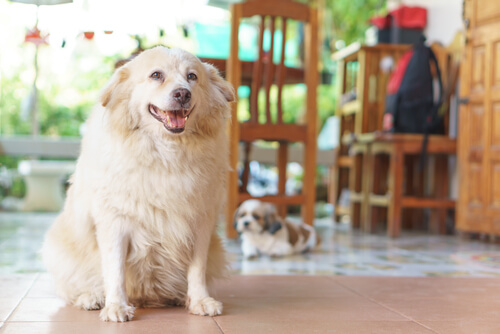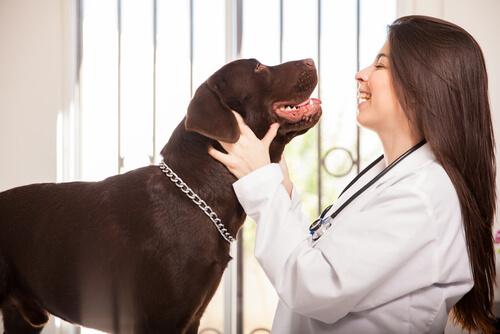How to Understand Dog Aging


Written and verified by the lawyer Francisco María García
The effects of time are felt on people and animals. Old age comes quickly and, in the event that your dog is aging, there are many signs that signal the arrival of “old age.”
Your dog is getting old, the moment of old age
As our pets become older, it becomes necessary to take into account any signs that indicate the moment in which this stage has begun.
It is also important to consider specific treatments to better address this stage. Old age is not a disease, but rather evidence of an animal’s normal and progressive degeneration. As happens in humans, dog aging fosters the appearance of some diseases.
The two phases that indicate that your dog is aging

In the first phase, the animal begins to age at the cellular level. We will see that its coat begins to change, becoming gray in areas like the legs and snout. Above all, this is due to low mobility and low activity.
In the second phase, dog aging accelerates. It looses its sense of smell and its hair turns white. It’s shiny hair takes on a matte tone, and we will even begin to notice changes in behavior.
This second phase is when they are the most prone to the risk of kidney and heart diseases.
Signs that the dog is getting older, depending on the size
Small and very small dogs under 5-10kg can be considered at a mature age when they become 7-8 years old and senior when they are older than 12 years old.
Dogs that weigh less than 25 kilos become mature at 6-7 years, and are old when they exceed 10 years.
Large dogs, between 30 and 45 kilos, are considered mature after 5 years old and old when they are over 8 years old.
Very large dogs age very fast after they turn 5 years old, and usually do not exceed 10 years.
Breed also matters
The breed of the dog is another fundamental factor that affects its average age. Thus, by way of example, a boxer usually lives for fewer years than a German shepherd.
The great longevity of the toy poodles is known. The longevity record is held by Bluey, an Australian shepherd dog who lived as long as 29 years.
Signs indicating dog aging
- Gray hair. The same thing happens with people. An old dog’s fur begins changing color and gray hair begins to appear, especially on its face.
- Less and less physical activity. We will notice that the animal no longer runs or moves as actively as it did before.
- There are even movements that it will avoid. Our pet’s joints and muscles are no longer the same as when it was young. Therefore, some movements like getting into bed can be uncomfortable and our dog can refuse to do them.
- Need for more rest. Our dog is aging and will have a decrease in its energy, so it will sleep or rest for longer times than usual.
- Some cognitive dysfunctions. It’s memory will fail and our pet will forget where the food and bathroom sites are and what its schedule is.
- When the dog needs to wait to go to the bathroom, he will no longer be able to do so, and we will find small puddles around the house.
Tips to better ease the dog aging

- It is necessary to have a lot of patience with the animal. Continue taking your walks daily, albeit more briefly and more frequently, and understand that our friend is not as vital as before.
- We must check their teeth well. In cases where it has lost many teeth, you have to look for special food for older dogs.
- By brushing, we activate the circulation, and we eliminate the whole layer of dead hair. During the brushing, we can see if there are lumps on the skin, bald spots, etc.
- By touching the ganglia, we will see if any are swollen, since cancer can appear in the form of tumors.
- In the case of long-haired dogs, we can cut their hair away from the area of the eyes so that the excess hair does not block their vision.
- Veterinary checks should be more frequent with an elderly dog.
This text is provided for informational purposes only and does not replace consultation with a professional. If in doubt, consult your specialist.